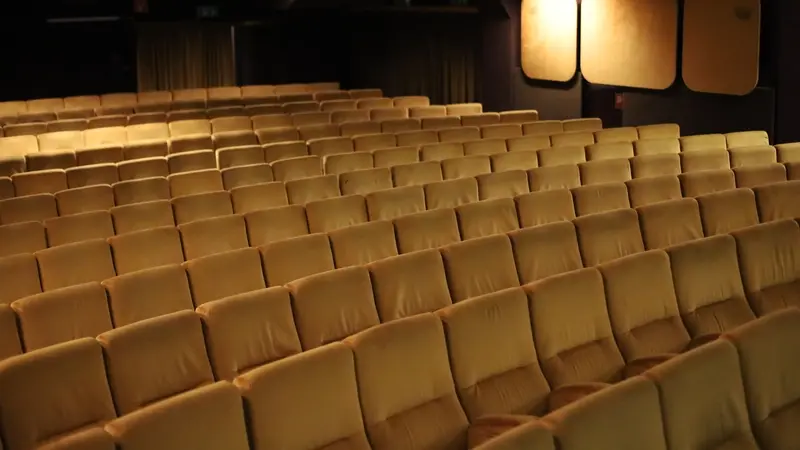A landmark study of the role of higher education in social mobility has placed the University of Exeter joint bottom in a league table of Russell Group universities, because of its relatively low levels of students from disadvantaged backgrounds and their relatively low earnings after graduation.
It was ranked 103rd overall in a survey of 111 higher education institutions in England.
The research was performed by the Institute for Fiscal Studies in partnership with The Sutton Trust and the Department for Education.
It analysed data on socio-economic background, education pathways and adult labour market outcomes for several entire school cohorts, covering close to the full population of England, to provide the clearest picture yet of how higher education attendance influences social mobility chances.
A social mobility rate was calculated for universities, subjects and individual degrees, based on entrance rates for students from disadvantaged backgrounds and how many of them go on to be high earners after graduation.
Eligibility for free school meals at sixteen was used as the marker of disadvantage, while adult earnings were measured at age 30 to allow time for careers to stabilise and mature.
 Universities social mobility scatter chart. Source: The Sutton Trust.
Universities social mobility scatter chart. Source: The Sutton Trust.
Equal access to university and an equal chance of labour market success for those who attend it would yield a social mobility rate of 4.4% using this research methodology.
Seven universities met or exceeded this benchmark, demonstrating that high levels of social mobility can be achieved via higher education even in the current context of wider inequality.
Queen Mary, University of London recorded the highest mobility rate of 6.8% at the top of a group of higher education institutions which combine high access rates for students from disadvantaged backgrounds with high levels of labour market success.
The University of Exeter recorded equal lowest social mobility rate in the Russell Group at 0.3%, combining relatively low levels of students from disadvantaged backgrounds with their relatively low earnings after graduation.
It also came ninth from bottom in the national rankings of all higher education institutions in England, just above a handful of specialist institutions including performing arts and drama colleges with low levels of students from disadvantaged backgrounds who also have low earnings prospects.
Russell Group universities social mobility rates (%)
| Queen Mary, University of London | 6.8 |
| King's College, London | 2.9 |
| London School of Economics | 2.8 |
| Imperial College, London | 2.3 |
| University College, London | 2.0 |
| University of Liverpool | 1.1 |
| University of Manchester | 1.0 |
| University of Birmingham | 1.0 |
| University of Warwick | 0.7 |
| University of Sheffield | 0.7 |
| University of Nottingham | 0.6 |
| University of Durham | 0.6 |
| University of Leeds | 0.6 |
| University of Southampton | 0.5 |
| University of Cambridge | 0.5 |
| University of York | 0.5 |
| University of Oxford | 0.5 |
| University of Bristol | 0.4 |
| University of Exeter | 0.3 |
| University of Newcastle Upon Tyne | 0.3 |
Social mobility scores are the percentage of students eligible for free school meals at sixteen who were in the top 20% of earners at age 30. Exeter is placed above Newcastle in the table because its graduates from disadvantaged backgrounds have slightly better earnings prospects.
The study recommended several changes, including increased use of widening participation and social mobility measures in university rankings. Universities are currently rewarded for the school grades of the students they take, a measure which discourages access improvements.
It also recommended that the most selective universities make more ambitious use of contextual admissions to widen access. This might include making reduced grade offers to students from disadvantaged backgrounds, reaching out to attract applicants from more diverse communities and providing direct financial support.
Goldsmiths College, in twelfth place overall with a social mobility rate of 3.6%, one of the highest among “old” universities, demonstrates this approach.
It actively recruits students who live near its South East London campus and offers a range of scholarships, bursaries and fee waivers for local residents on low incomes, students from Black, Asian and Minority Ethnic backgrounds, students in financial hardship, students who live in low participation in higher education postcodes, and students who have been in care, are estranged from their families or are refugees or asylum seekers.
Top ten university social mobility rates (%)
| Queen Mary, University of London | 6.8 |
| University of Westminster | 5.6 |
| City University | 5.3 |
| University of Greenwich | 5.0 |
| London South Bank University | 4.6 |
| Brunel University | 4.4 |
| St George's Hospital Medical School | 4.4 |
| University of East London | 4.1 |
| London Metropolitan University | 4.0 |
| Kingston University | 4.0 |
Among a total of 111 higher education institutions in England. 4.4% = full equality.
Many of the top-ranking institutions for social mobility are less selective universities, which take on the majority of students from disadvantaged backgrounds and are also located in large cities where employment opportunities are greater.
In particular, graduates from London and the South East are more likely to work in the capital after university, where salaries are higher, while London has a higher share of high achieving students from disadvantaged backgrounds than anywhere else in the country.
Three London universities (King’s College, Imperial College and London School of Economics) have such high success rates for the disadvantaged pupils they do admit that their relatively low access rates are partly counterbalanced in their social mobility scores.
Overall, more selective institutions offer the best chance of becoming a higher earner, but while access to these institutions has improved in the last two decades, those selective universities which have high social mobility rates demonstrate that much more can be done by other selective institutions which have low social mobility rates.
Bottom ten university social mobility rates (%)
| University of Winchester | 0.4 |
| University of Exeter | 0.3 |
| University of Newcastle Upon Tyne | 0.3 |
| Conservatoire for Dance and Drama | 0.3 |
| Liverpool Institute for Performing Arts | 0.3 |
| Central School of Speech and Drama | 0.3 |
| York St John University College | 0.2 |
| Rose Bruford College | 0.2 |
| Arts Institute at Bournemouth | 0.2 |
| Trinity LABAN Conservatoire of Music and Dance | 0.0 |
Among a total of 111 higher education institutions in England. 4.4% = full equality.
The research used data from a cohort of nearly a million young people who attended university in the mid-2000s and recently turned 30, supplemented with data for more recent cohorts including those who entered university between 2012 and 2014 and those who entered in 2018 and 2019.
Controls were included for a range of background characteristics, and broader income groups and different definitions of social mobility were also assessed for impact on the results.
Members of the mid-2000s cohort who were eligible for free school meals were 100 times less likely to attend Oxbridge than those who attended a private secondary school.
Since then the most selective Russell Group universities (Oxford, Cambridge, Imperial and the London School of Economics) have increased the proportion of students they take from disadvantaged backgrounds from 1.7% to 2.2%, while the proportion entering the wider Russell Group has increased from 2.6% to 3.7%.
The research nevertheless found that success rates should not be adjusted for those institutions at which access rate changes had taken place, although Russell Group universities have tended to increase access the least while “old” universities and the least selective institutions have increased access the most.
Overall, university graduates remain nearly three times as likely as non-graduates to be among the top fifth of earners by age 30 while disadvantaged young people who don’t attend higher education are much more likely to end up in the lowest income groups.










